There have been cases with students experiencing psychosis, hallucinations or near-death respiratory failure after smoking e-cigarettes, as the product is mixed with many unknown chemicals, which makes it more dangerous than regular cigarettes.
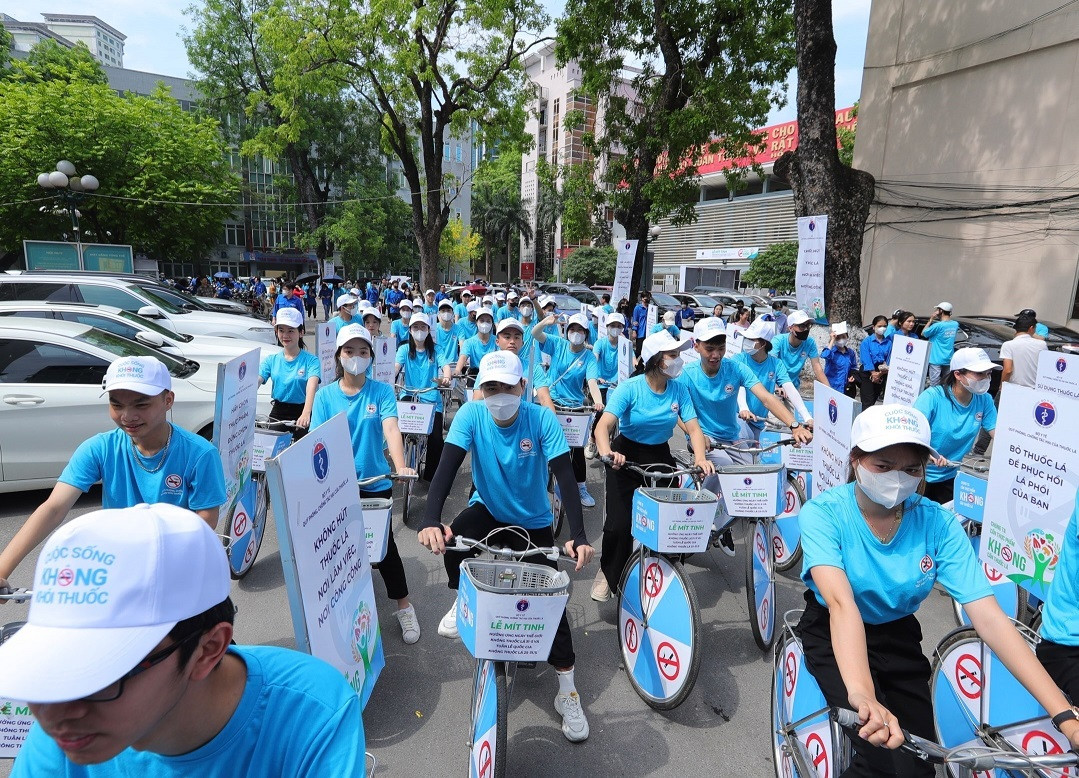

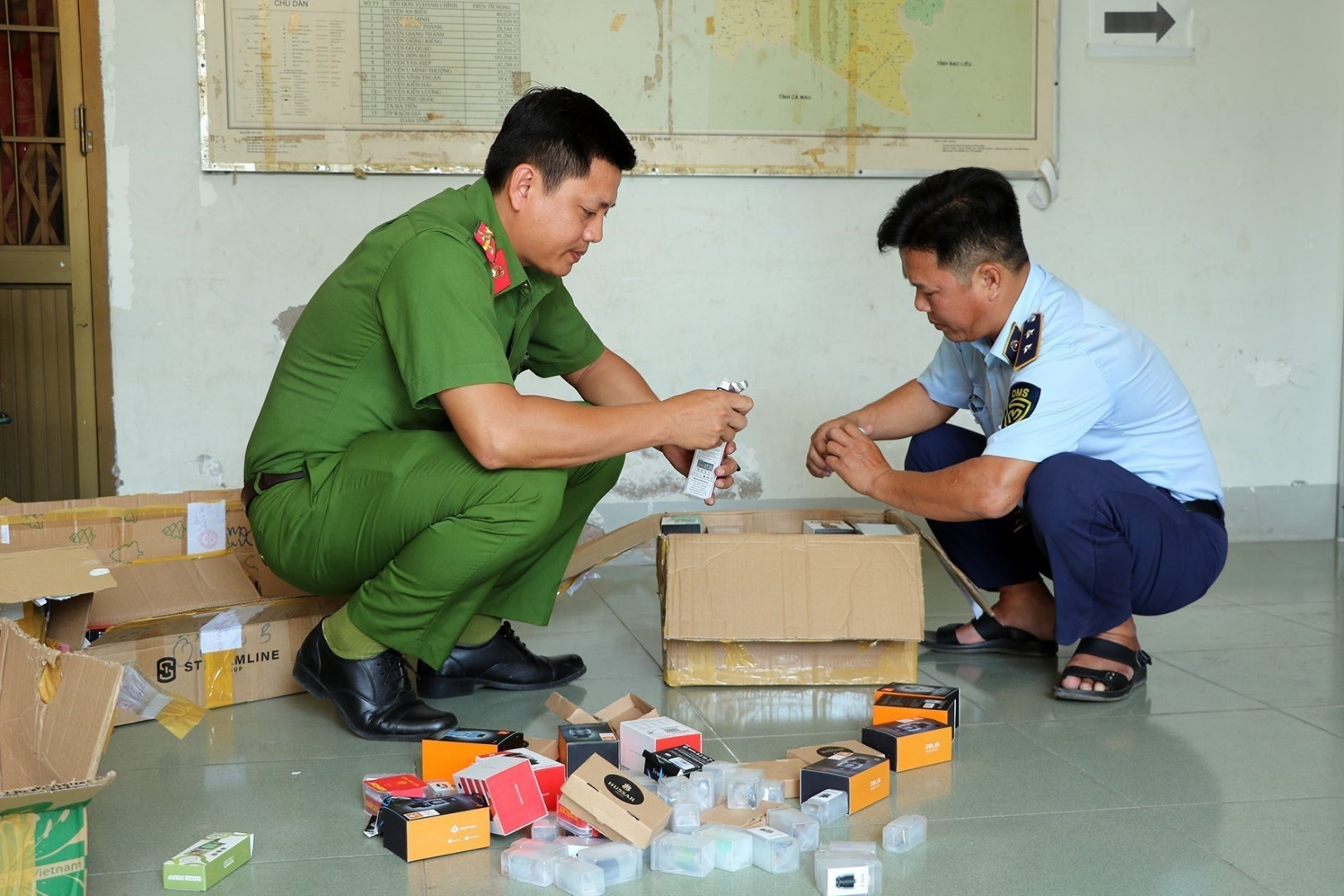
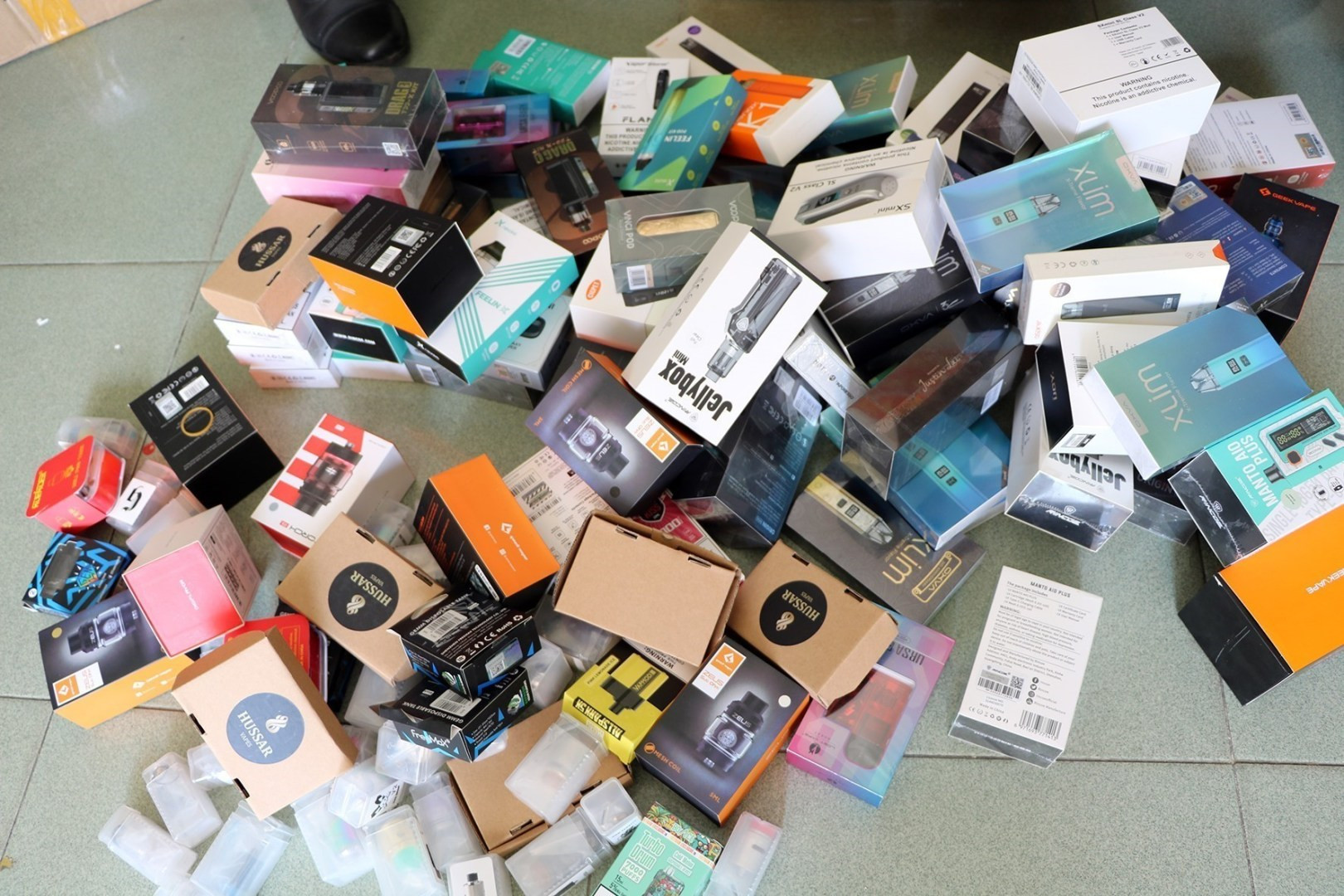
A recent survey by the University of Public Health in 11 provinces and cities among students from grades 6 to 12 showed that the rate of e-cigarette use in this group increased to 8.1% in 2023 from 2.6% in 2019. Meanwhile, in the group of students between 13-15 years old, the rate doubled to 8% in 2023 from 3.5% in 2022. Particularly, the rate of e-cigarette use in the female group aged 11-18 years old is 4.3%, according to the survey.
Associate Prof. Dr. Luong Ngoc Khue, former Director of the Department of Medical Services Administration under the Ministry of Health (MoH) said that in 2023 alone, 1,224 people were hospitalised due to e-cigarette and heated tobacco use, including 71 cases of people under-18 years old. Particularly, 58 were under 16 years old.
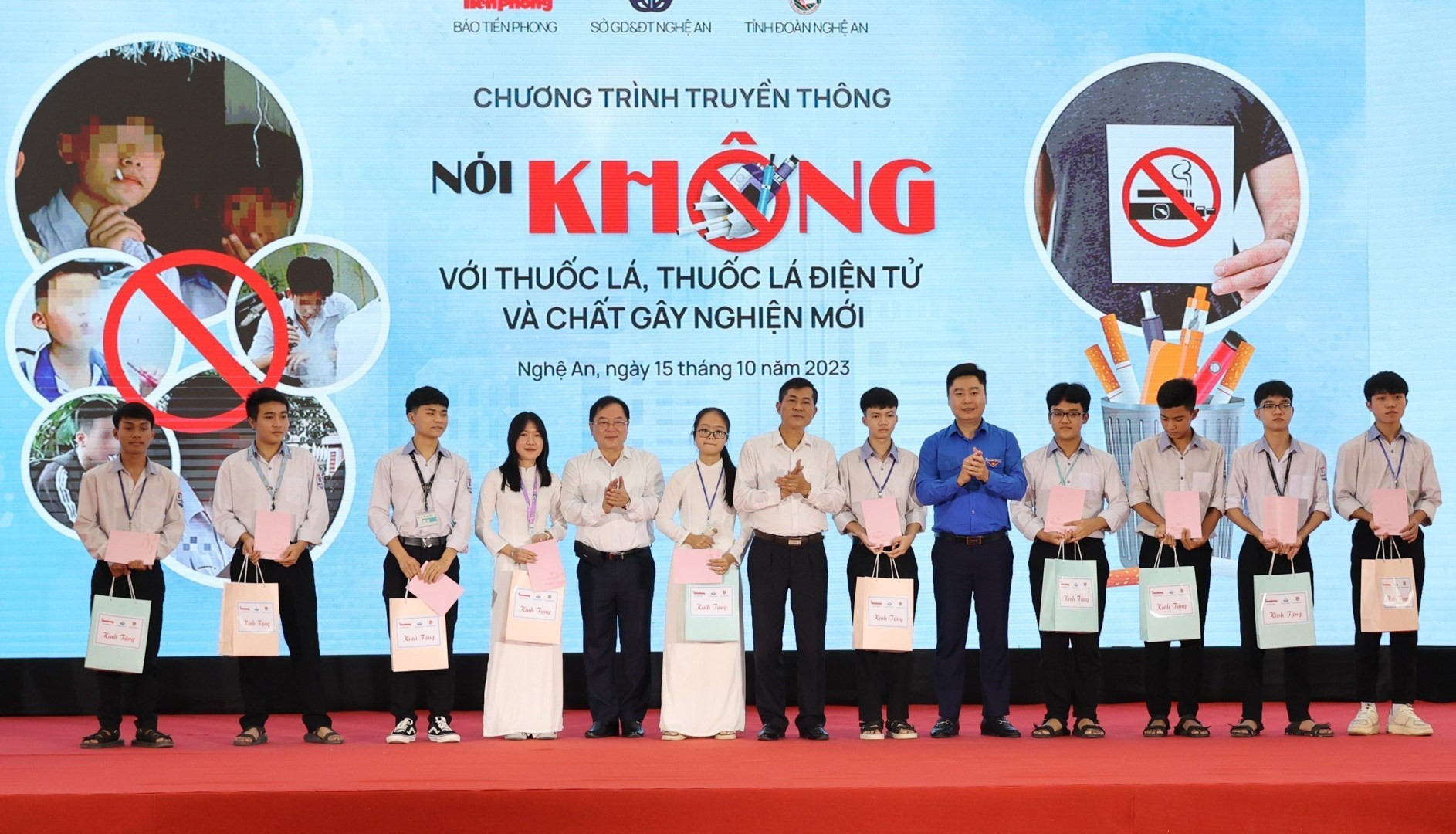


A representative from the MoH’s Fund for Tobacco Harm Prevention and Control said at least 60 chemical compounds have been found in e-cigarette liquids (e-liquids) and many more found in aerosols or smoke produced from e-cigarettes, including nicotine, a highly addictive chemical which causes nicotine addiction and other risks including heart and lung diseases and many other diseases.
Tobacco leaves themselves naturally contain nicotine, but e-cigarette products often contain additives to increase nicotine absorption, meaning the addiction is controlled and can be elevated. These substances can deliver nicotine into the brain within seconds, causing users to quickly become dependent on nicotine, making it difficult to quit smoking.
According to Dr. Nguyen Trung Nguyen, Director of the Poison Control Centre under Bach Mai Hospital, e-cigarettes use a lot of flavourings and chemicals, so they can be abused by drug addicts through mixing. Users can arbitrarily increase the nicotine ratio excessively or add drugs and other addictive substances to use without being detected. Meanwhile, the cost of treatment for mild to severe cases of acute drug-included e-cigarette poisoning ranges from more than 10 million VND (393 USD) to hundreds of millions of VND.




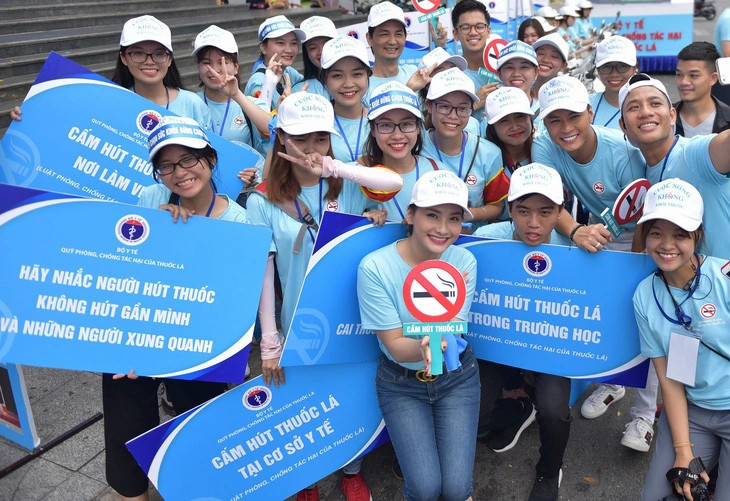

Data from WHO and the US organisation Campaign for Tobacco-Free Kids showed that the number of countries and territories applying policies to ban this product is increasing. There have been at least 39 countries and territories that have completely banned e-cigarette products, while at least three countries and territories – Hong Kong (China), Taiwan (China), and Venezuela, have switched from controlling the products as pharmaceuticals to prohibiting them.
In the ASEAN region, five countries have completely banned e-cigarettes, namely Thailand, Singapore, Laos, Brunei and Cambodia. For heated tobacco, at least 18 countries have banned it, including five ASEAN countries of Cambodia, Laos, Singapore, Thailand, and Brunei.
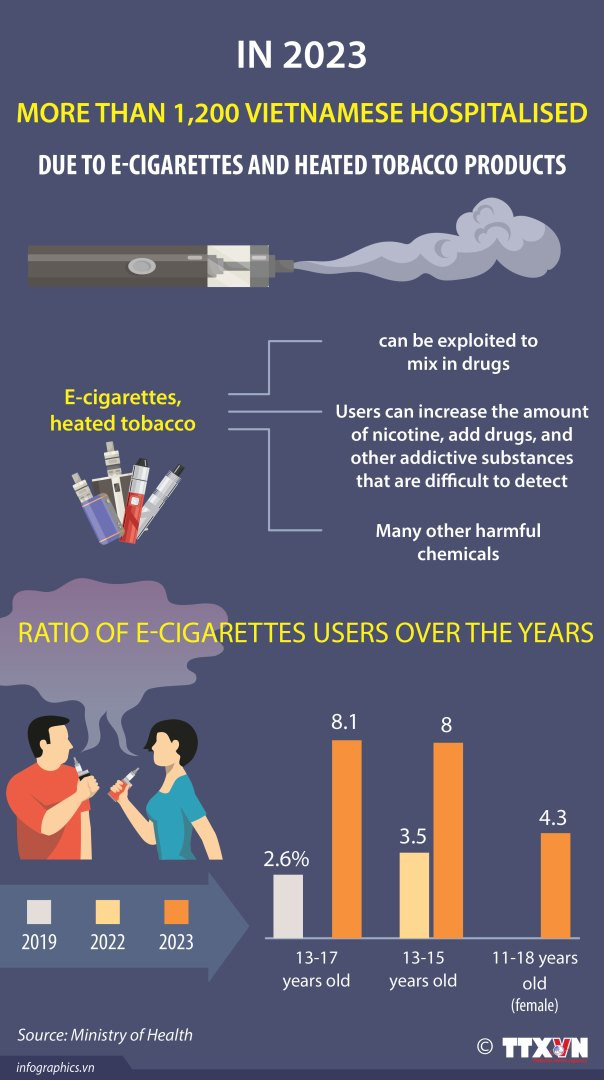
The MoH is drafting a proposal to the Government to ask the National Assembly to issue a resolution banning the production, sale, import, and advertising of e-cigarettes and heated tobacco and other new related products that may be present in the future. In the long term, the ministry will propose the Government and the National Assembly consider amending the Law on Tobacco Harm Prevention and Control, thus adding this regulation to the law.
Dr. Khue held that along with the efforts of the State, families need to pay greater attention and listen to their children, while supervising children’s daily activities and warning the younger generation about the harmful effects of e-cigarettes. At the same time, schools should also increase extracurricular activities to relieve students’ stress after school, he added./. VNA